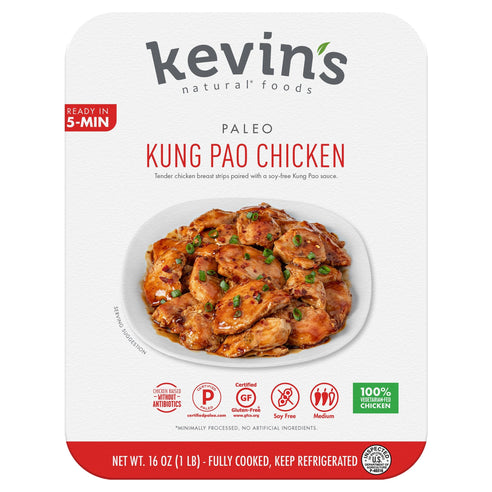Paleo Lifestyle 101: a Comprehensive Beginners' Guide

Paleo Lifestyle 101: a Comprehensive Beginners' Guide
The paleo lifestyle, short for the Paleolithic diet, refers to a style of eating modeled on the habits of early humans during the Paleolithic era (between 2.5 million and 10,000 years ago).
The important distinction lies in the introduction of mass-farming around 10,000 years ago, which quickly and radically altered our diets.
Before agriculture, Paleolithic humans ate what's known as a hunter-gatherer diet. Other names one may hear: caveman diet, or stone-age diet. This is a diet based on eating whole foods as they are naturally found, with minimal-or-zero processing.

What do you not eat on a paleo diet?
In essence, any processed foods cannot be included in a true paleo lifestyle.
Depending on your level of commitment to eating a paleo lifestyle, this can mean different things. You may just need to cut out processed foods and sugars, or you may want to cut out all dairy as well. Paleo lifestyles are highly adaptable for different uses.
Why would I eat paleo?
The hypothesis at the root of the paleo lifestyle movement is this - our bodies are well-adapted to the unprocessed foods that have always been available to us: nuts and seeds, fruits and vegetables, and wild-caught meats.
However, since agriculture made bread, pasta, and other highly processed foods widely available, our diets have become increasingly discordant with our bodies' natural states.
This hypothesis poses a complicated question with no easy answer, but studies have suggested that Paleolithic nutrition has definite advantages.

The health benefits
By removing processed carbs, sugars, and unhealthy fats, the paleo lifestyle can help you lose weight, control your blood pressure, and better manage your glucose levels.
Obesity-related health risks, like heart disease and metabolic syndrome-related NAFLD, have also been combatted using a paleo lifestyle.
For some, the simplicity of the diet is also a positive factor.
This blog will answer many common questions about the paleo lifestyle and will help you jumpstart your journey should you want to try it yourself.
Tender chicken breast strips paired with a vibrant and spicy Kung Pao sauce made with coconut aminos, toasted sesame oil, and chilies.
Kung Pao Chicken
The ultimate paleo lifestyle food list
To give you an idea of the foods you'd eat on a paleo lifestyle, here's a list of nutritious, delicious, and versatile foods that we've been eating since we lived in caves -
- Meat - beef, lamb, turkey, chicken, pork, etc.
- Fish/seafood - trout, salmon, haddock, shrimp, shellfish, etc.
- Eggs - choose free-range or pasture-raised
- Vegetables - broccoli, kale, asparagus, onions, carrots, spinach, etc.
- Fruits - apples, bananas, berries, oranges, avocados, tomatoes, etc.
- Tubers - potatoes, yams, sweet potatoes, turnips, etc.
- Nuts and seeds - almonds, cashews, macadamias, hazelnuts, sunflower seeds, pumpkin seeds, etc.
- Healthy fats and oils - extra-virgin olive oil, avocado oil
- Spices - sea salt, turmeric, garlic, rosemary, thyme, etc.
That's a lot, right? What's appealing about the paleo lifestyle is that it isn't as exclusive as other trending diets. The real secret is in finding good quality ingredients and preparing them without processed additives.
Let's address the foods you'll avoid on a paleo lifestyle, and you'll see that entire food groups usually included in clinical nutrition are excluded from this "stone age" diet.
Our Mongolian-style beef is paleo friendly:
Tender steak tips paired with a soy-free Mongolian sauce made with coconut aminos, ginger, and shiitake mushrooms.
Mongolian-Style Beef
Foods to avoid on paleo
Here are some of the foods that one cannot eat on a paleo lifestyle -
- Sugar and high-fructose corn syrup - soft drinks, juices, cane sugar, pastries, candy, ice cream, etc.
- Grains - bread, pasta (wheat, spelled, rye, barley, etc.)
- Legumes - peanuts, beans, lentils, etc.
- Dairy - *some versions of paleo allow for full-fat products like butter and cheese, but most dairy products are not allowed on paleo
- Some vegetable oils - sunflower oil, soybean oil, cottonseed oil, and others
- Trans fats - are found in margarine, these are known as "hydrogenated oils." Steer clear.
- Artificial sweeteners - aspartame, sucralose, etc. Use natural sweeteners instead.
Can you drink milk on paleo?
Strictly speaking, any dairy products are not paleo because hunter-gatherers didn't milk cows. While low-fat milk is definitely not paleo, organic and grass-fed milk is accepted by some paleo lifestyle followers.
Can you eat rice on paleo?
Grains are typically banned from the paleo lifestyle, but it is true that rice occurs naturally and could be eaten before large-scale agriculture. Some paleo dieters eat small amounts of white rice, but it depends on why you're eating paleo - what you're trying to accomplish.
Are bananas on the paleo lifestyle?
Being one of the fruits that hangs before us from the branches of trees, bananas are definitely paleo-friendly.
Is fruit allowed on paleo?
In its natural state, all fruit is considered paleo.
What alcohol is paleo?
The short answer: no. Being processed and a toxin means that, if you are trying to eat strictly paleo, you'll have to say no to alcohol.

What can I eat for breakfast on the Paleo lifestyle?
So many things! Scramble eggs with veggies, or make loaded hash-browns with bacon.
You can also go simpler: a piece of salmon and a side of fresh fruit is a great breakfast.
Paleo lifestyle for weight loss
Many choose the paleo lifestyle for weight loss, as cutting the majority of carbs and sugars from anyone's diet will certainly improve the quality of their nutrition.
Can you lose weight on the paleo lifestyle?
It is very possible to lose weight on the paleo lifestyle, but it's also not guaranteed. If you've tried losing weight on paleo but not had the results you expected, you might check out the benefits of keto diet instead.
To lose weight, one's body must be in what is called a calorie deficit - meaning that you are burning more calories in a day than you consume.
The number of calories your body needs to sustain your current weight will vary from person to person. See a registered dietician or your medical provider if you want an accurate answer to this question yourself.
How long does it take to see results from the paleo lifestyle?
There's no universal answer to this question. If you start eating a very healthy paleo lifestyle, you'll likely see quick weight loss in the first week or two - this may be mostly water weight, and your losses could slow after this initial period. However, if you are eating healthy foods and remaining in a safe calorie deficit, be assured you're on track.
How to gain weight on a paleo lifestyle
Being high in great nutrients and proteins, the paleo lifestyle can also be used to gain muscle and body mass.
Can you gain weight on paleo?
As long as you're eating more calories than you burn (a calorie surplus), you will gain weight! Combined with a regimen of vigorous exercise and an emphasis on protein, the paleo lifestyle can be a great way to build muscle mass.
Check out Kevin's Marsala Chicken:
Tender chicken breast strips paired with a rich Marsala wine sauce made with mushrooms, garlic, and thyme.
Chicken Marsala
Who should not eat the paleo lifestyle?
While the paleo lifestyle can be very appealing, it may not be right for everyone. Removing grains from the diet cuts out vitamins and minerals that are healthy for our bodies.
There is also evidence that over-reliance on meat can increase the risk of heart disease. Some paleo lifestyles aren't balanced correctly, so be sure that you aren't eating much more meat than you would on a typical diet.
Always consult with your doctor before making radical changes to your diet.
Kevin's paleo
Interested in trying the paleo lifestyle? Check out Kevin's paleo recipes for delicious, easy-to-make meals that our Paleolithic ancestors could be proud of.














